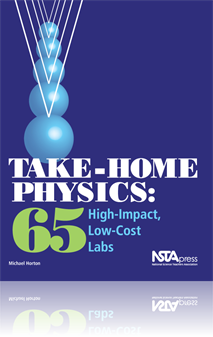All Book Chapters
Book Chapter
Students will once again be reminded of the inverse square nature of light intensity. This is a concept that students often struggle with, especially when calculations are involved. The important idea of this lab is not to actually figure out the wat...
Book Chapter
This activity is inquiry in that students have not yet studied interference or interference patterns. Students without a computer at home should be instructed as where they can go to use a computer with speakers that will allow them to install softwa...
Book Chapter
In this inquiry activity, students will get some experience with static electricity before getting deep into electricity and magnetism. They will not know which combinations will generate static electricity and will test some materials of their own c...
Book Chapter
In this lab, students will experience the interaction of charged objects. Students should realize that the phrase “opposites attract” isn’t exactly correct. It is not just positively and negatively charged objects that are attracted. Positively...
Book Chapter
This inquiry activity is performed before students understand the difference between current and voltage. Students also determine the procedure themselves and design the data chart and graph on their own. This makes it Level 3 inquiry. The lab introd...
Book Chapter
This activity is inquiry-based in that students will perform the activity before they formally learn about how objects can become charged with static electricity (induction, contact, etc.). This will allow the teacher to refer to this activity when t...
Book Chapter
The number of batteries used in this lab is determined by the type of lightbulbs that are used. A 3 V lightbulb will require two batteries. Students should perform this activity after being instructed how to use the multimeter. Instructions will vary...
Book Chapter
An LED should never be connected directly to a battery or it will be damaged. A current-limiting resistor must be attached to either leg to prevent this damage. The value of the resistor will depend on the battery that you use and the LED that you us...
Book Chapter
This activity is inquiry-based in that students will perform the activity before they formally learn about how a switch works. They will use a multimeter to discover the different settings on a triple-throw switch. The teacher should show the student...
Book Chapter
This lab is between a Level 2 and Level 3 inquiry activity in that it should be assigned after students understand acceleration but before they learn about the acceleration gravity. Because there are many sources of error when using a pendulum, stude...
Book Chapter
In this investigation, students will construct electromagnets and test to see which variables make them stronger. Although elementary and middle school teachers are expected to have done this activity with their classes, teachers of younger students ...
Book Chapter
This activity will introduce students to the idea of magnetic field lines—a concept they have probably encountered but may not fully grasp. Completing this activity and reading the corresponding background information should enable students to unde...
Book Chapter
Resistance is how much an object resists the flow of electrons. This depends on the material (its resistivity) and the size and shape of the sample being tested. In this lab, students will determine whether resistance is directly or indirectly relate...
Book Chapter
Students can easily see what series resistance means in this activity. Students are sometimes confused by the fact that all real resistors are the same size even when they have far different values. It is recommended that after this lab at home, stud...
Book Chapter
Students will measure the resistance of resistors that they have drawn on paper with a graphite pencil. They will then connect two resistors in parallel and measure the resistance of the combination. In this activity, it is important that students co...


